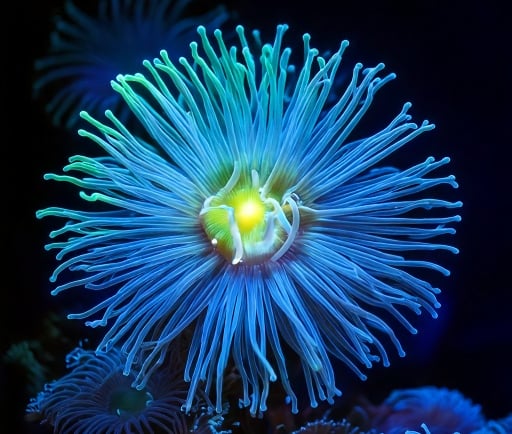Unveiling the Mysteries of Biofluorescence in Marine Life


Introduction to Biofluorescence
Biofluorescence is a captivating phenomenon observed in various marine organisms, including anemones, corals, and moray eels. This biological occurrence allows these creatures to absorb light, transforming it into a different spectrum before re-emitting it. The vibrant displays of glow that underwater life exhibits under specific lighting conditions not only add beauty to the ocean's depths but also serve important ecological functions.
The Science Behind the Glow
In essence, biofluorescence occurs when certain biological compounds in marine organisms absorb photons from specific light wavelengths and emit them at longer wavelengths. For example, anemones can utilize biofluorescence to signal potential mates or warn off predators. Moray eels display unique glowing patterns which may serve as communication in densely populated reefs.
Researchers have increasingly focused on coral biofluorescence, which enhances the vibrancy of these underwater ecosystems. The pigments that produce this glow can assist in photosynthesis, effectively aiding the coral's symbiotic algae. Such adaptability demonstrates the evolutionary advantages that biofluorescence confers, assisting not just in aesthetic appeal but in ecological survival as well.
Implications for Research and Conservation
Understanding biofluorescence opens new avenues for marine research and conservation efforts. Investigating glowing species helps scientists unravel the complexities of marine ecosystems and their adaptations. This knowledge is essential, especially in light of global threats such as climate change and habitat destruction, which can jeopardize these uniquely glowing organisms.
Moreover, the study of biofluorescence has potential applications beyond the ocean. Scientists are exploring how these mechanisms can inspire new technologies such as bio-inspired light sources and advanced optical devices. By learning from nature's innovations, we may be able to create sustainable solutions that enhance our understanding and interaction with the world.
In conclusion, the glow of biofluorescent marine life such as corals, anemones, and moray eels intricately ties into the health of our oceans. As we continue to explore these underwater wonders, it becomes increasingly evident that protecting their habitats is vital, not only for the preservation of their beauty but also for the technologies and insights they might provide humanity in the future.
